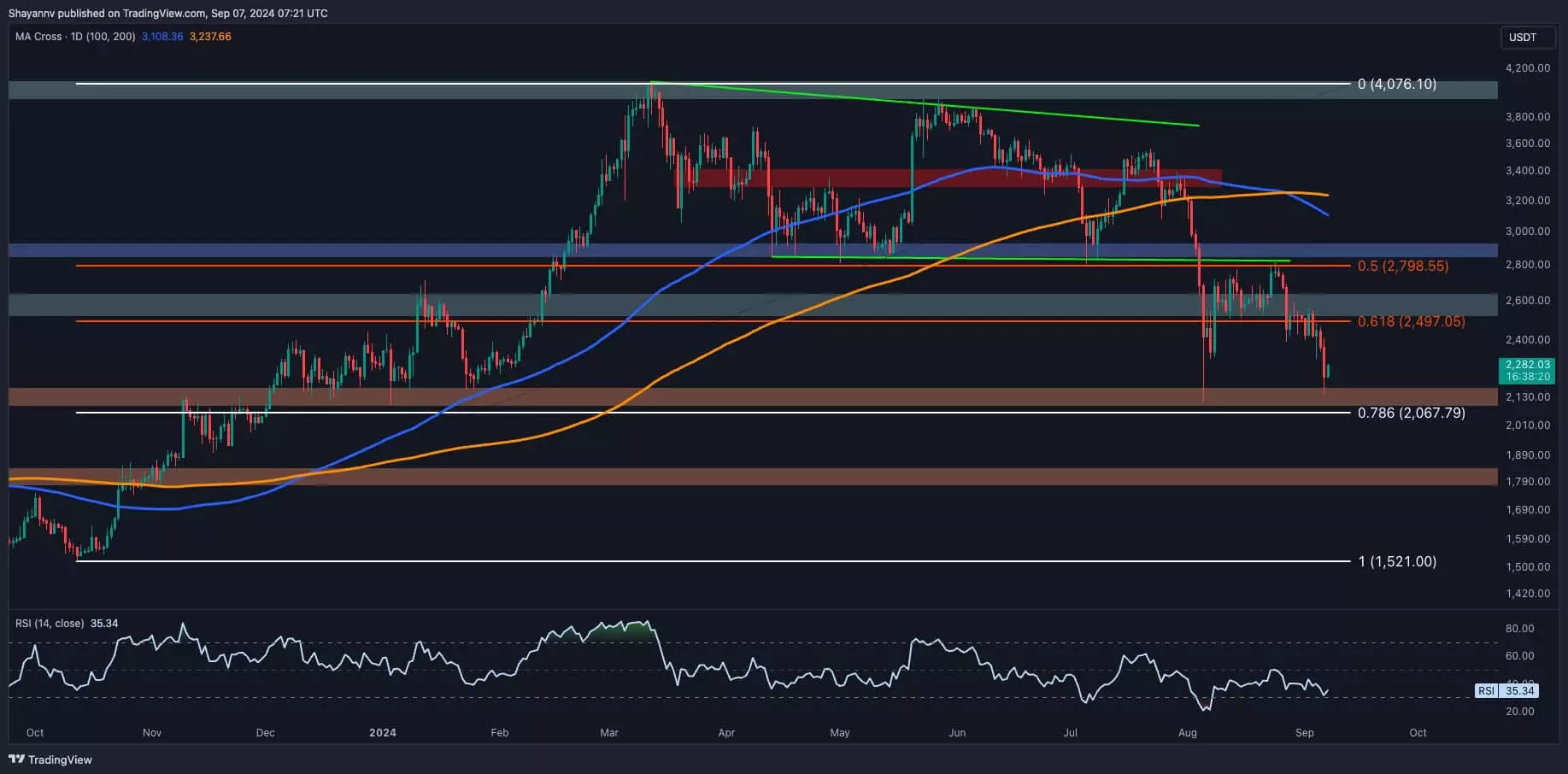Ethereum, one of the leading cryptocurrencies in the market, has been facing a significant downturn recently. This bearish trend can be attributed to several factors, including a pullback to the lower boundary of a broken wedge pattern and the formation of a death cross. These signs have instilled fear and uncertainty among investors, leading to a decrease in spot ETH ETF inflows and reduced overall investor interest.
The price of Ethereum is currently approaching a crucial support level, with the static $2.1K mark and the 0.786 Fibonacci retracement level at $2,067 acting as key zones of potential demand. If this support level holds, we might see a short-term sideways consolidation in the price of Ethereum, giving investors a brief respite before the next significant move is determined.
On the technical side, Ethereum was recently rejected from the resistance zone between the 0.5 ($2.6K) and 0.618 ($2.7K) Fibonacci levels, indicating continued bearish momentum towards the $2.1K support level. This support level has proven to be strong in the past, particularly in early August, suggesting that buyers might step in to accumulate Ethereum at these price points.
However, if the $2.1K support is breached, it could trigger a long-liquidation event, potentially pushing the price of Ethereum down towards the $1.8K region. Therefore, it is essential to monitor the price action in the coming days to determine whether Ethereum can hold onto its support level or if a deeper correction is on the horizon.
The value of Ethereum is closely tied to the active engagement of its users and the functionality of its decentralized network. One crucial metric to gauge this engagement is the number of unique active addresses on the Ethereum network. This metric serves as a proxy for Ethereum’s overall market demand and valuation, reflecting the level of user activity and transaction volumes on the network.
The 14-day moving average of Ethereum Active Addresses has been on a downward trend since late March 2024, indicating a decrease in user activity and transaction volumes. This decline suggests a bearish market sentiment, marked by reduced demand and lower investor participation. In order for Ethereum to recover and potentially start a sustainable rally, this trend needs to reverse, showing an increase in the number of active addresses on the network.
A resurgence in active addresses would signal growing interest and accumulation of Ethereum, indicating stronger demand and the potential for a bullish market reversal. Therefore, monitoring network engagement metrics alongside price action is crucial in assessing the overall health and future prospects of Ethereum in the cryptocurrency market.
Ethereum is currently facing a challenging market environment, marked by a bearish trend and decreased investor interest. However, the upcoming days will be crucial in determining whether Ethereum can hold onto its support level and potentially reverse its current downtrend. Monitoring both technical analysis indicators and fundamental network engagement metrics will provide valuable insights into the future trajectory of Ethereum in the ever-evolving cryptocurrency landscape.

